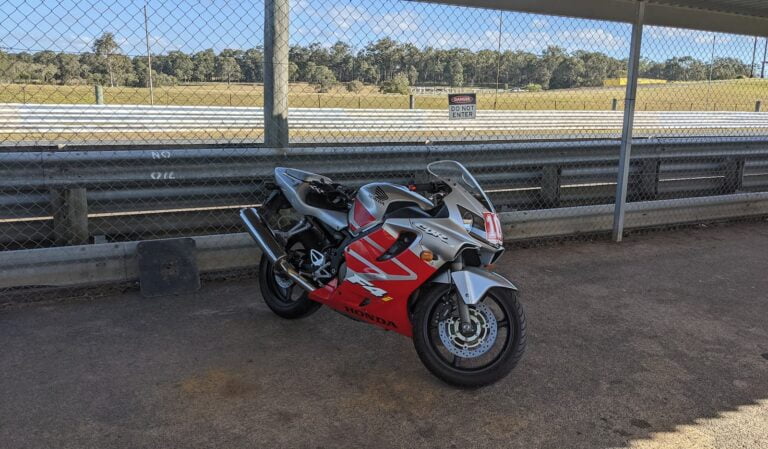Motorcycling is so much more than just accelerating, turning, and braking. To ride fast, and for a long time, it really pays to learn the crazy theory of motorcycles. Like:
- How exactly does a motorcycle corner?
- What is the best cornering line?
- What are the million things that can go wrong riding through suburbs, intersections, and out on the open road — and how can we avoid them?
- And what should I do if my clutch or brake line suddenly snaps?
These are the things these books cover.
Are you obsessed with motorcycles?
Well, I am. That’s why I created this site — as an outlet. I love learning and sharing what others might find useful. If you like what you read here, and you’re a fraction as obsessed as I am, you might like to know when I’ve published more. (Check the latest for an idea of what you’ll see.)
Overview of these Motorcycle Riding Books
We can all be better riders. This is the premise of each of these books. If you don’t think you have anything more to learn… well, move on. (Unless you’re looking for great gift ideas for your young niece!)
See here for more gift ideas for motorcycle lovers.
Every time I go through a corner and think “oops…” for whatever reason, I can trace it back to something I haven’t properly learned from one of these books or from a training course.
A Twist of the Wrist by Keith Code
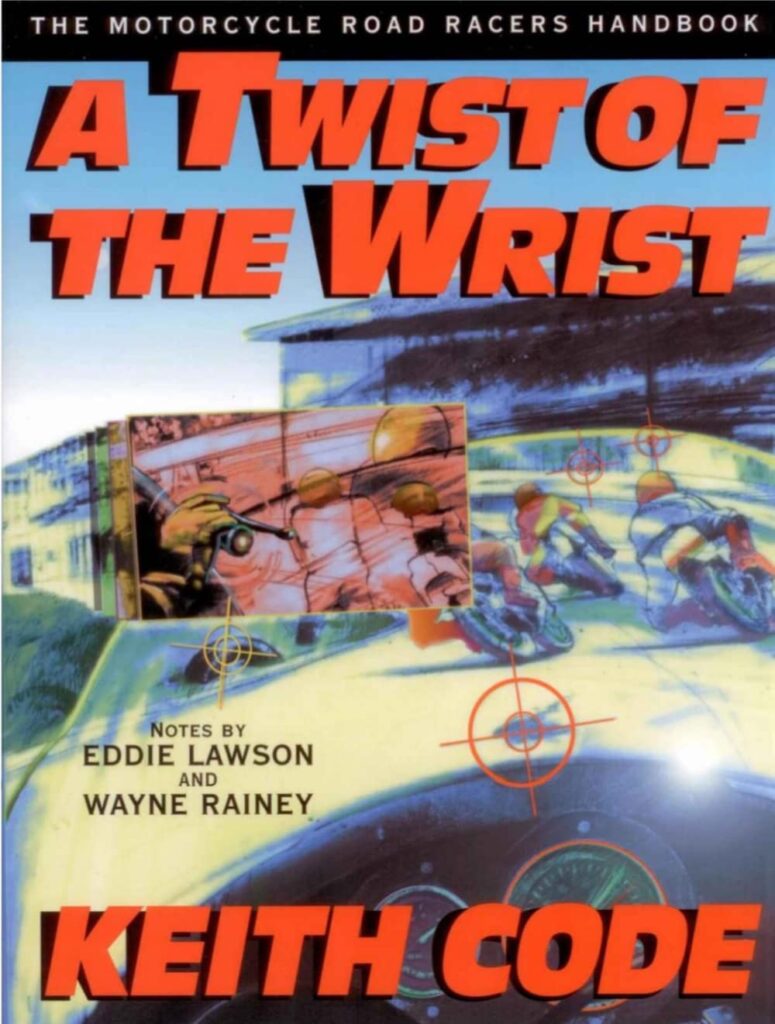
I’m mentioning A Twist of the Wrist (and its sequel) because these are my favourite motorcycle riding books of all time. It’s much more than about riding. I opened this book looking for a book on motorcycling and sport riding techniques. Instead, I found it to be a book on philosophy, and life/business guidance, as described by a motorcyclist.
For example, some of his guidance on motorcycling is
- Don’t watch the rider in front of you; watch the track
- Don’t talk yourself down. Avoid saying things like “I’m not good at xyz.” Analyse what you can improve, and change your behaviour.
- First learn to ride the track, then add speed.
There are many more. So many, in fact, that I wrote an article about it summarising those lessons.
The focus of A Twist of the Wrist is on motorcycle racing. There’s talk about cornering and posture and so on, but it’s all about tracks. There’s no discussion of emergency braking, traffic manoeuvres, or just street survival techniques.
Still, this book is invaluable. Many riders say how much they regret not going to a track earlier because of how much they learned about themselves and their motorcycle. Reading this book, you’ll start looking up track day events near you by the time you’re a quarter through it!
If you like A Twist of the Wrist and want more, then read its sequel, A Twist of the Wrist II!
Proficient Motorcycling by David Hough
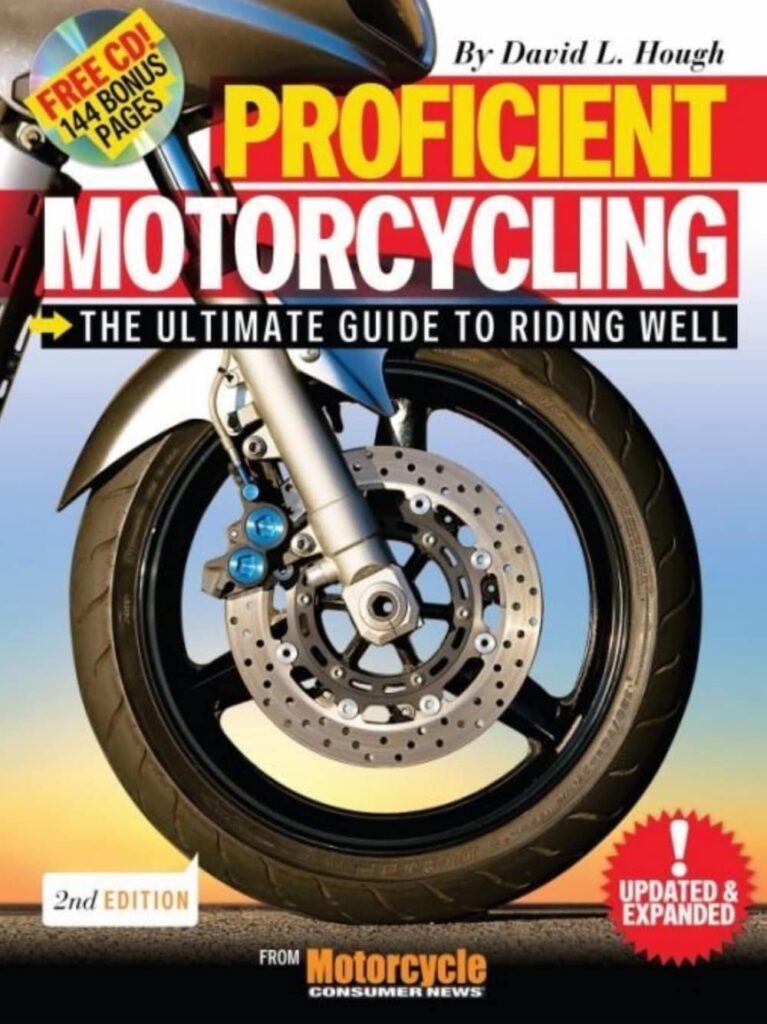
Proficient Motorcycling is a really great, easy to read introduction into how motorcycles move, and how you can make them move safely.
Even though the focus of this book is on street motorcycling, it explains a lot of the dyamics of the way motorcycles work in a very though way, even explaiing the physics simply.
I learned a lot from this book, including
- The turning process simplified: a thorough explanation of turning in the simplest turns – slow, look, lean, and roll. (This is different to other books which talk about seat position and all kinds of advanced topics that most road riders won’t use often)
- Cornering lines: how picking the right line means going through a corner faster, and how picking the wrong line can send me to the wrong side of the road
- Suburban threats: A terrifying synopsis of all the things that can go wrong in suburbs, including some very conservative tactics for surviving (we should all just move to the country…)
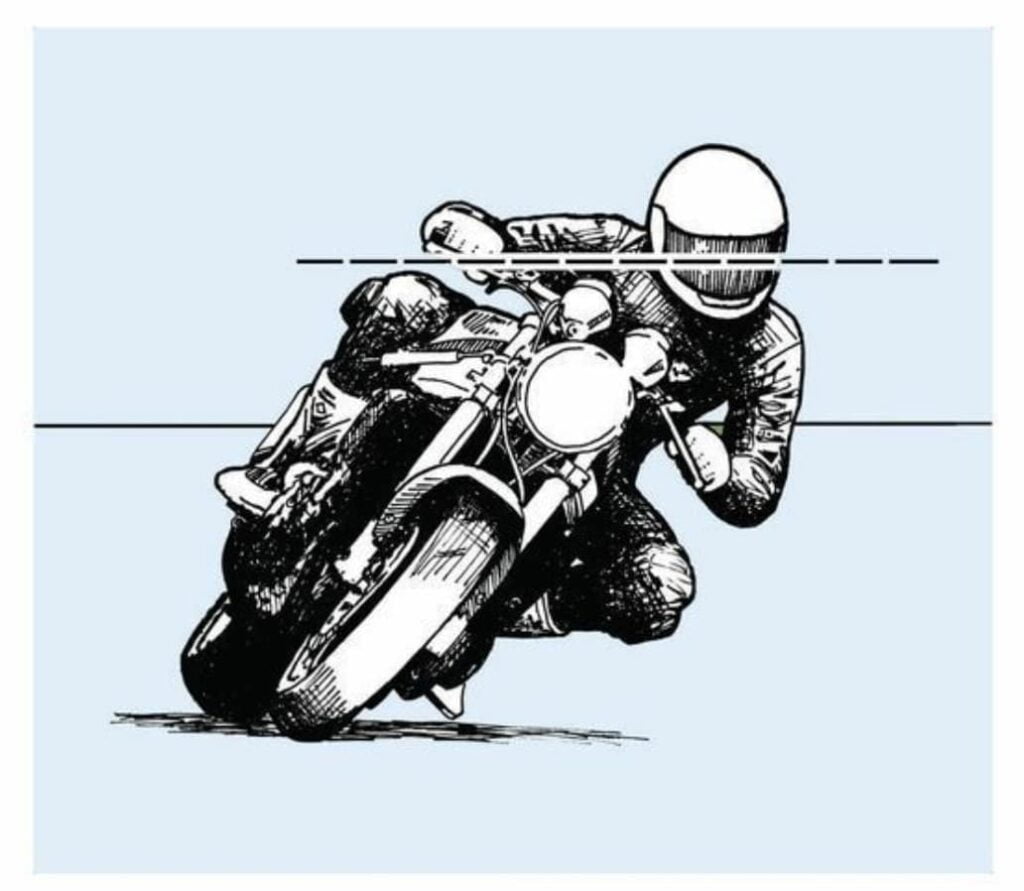
Total Control by Lee Parks

Total Control is a deep, technical book, that focuses on techniques you use in everyday life in road riding.
He takes you through every part of what is important in riding, from how a motorcycle works, through understanding psychology, to body positioning and how to corner.
Probably my favourite part, and the one I’m always trying to internalise (probably because it’s so complicated) is his “Ten Steps of Proper Cornering”. Ten! He references them constantly in the book, but you only learn them in the second part of Chapter 12 (“Body Positioning”), part of the third main section of the book.
Here they are, the 10 steps to proper cornering as told by Lee Parks:
- Put balls of feet on footpegs: Make sure the balls of your feet are on the footpegs, in a way that no matter how far you lean, no part of your foot will touch the ground.
- Preposition body: Pre-position it to how you want it to be mid-corner — before the corner starts. Your body’s centreline should be to the inside of the motorcycle’s centreline.
- Push outside grip: Push the outside grip gently, to keep the bike going straight. This counters the effect of your body’s position.
- Pick a turn point: You need to pick a point — any point — where you’ll start turning. This takes pressure off you to pick the perfect point later, reducing doubt, and letting you focus on the other parts of turning.
- Look through the turn: Look through, a good 5-10 meters before you start turning, moving your head (not just your eyes), and keeping it level.
- Relax the outside grip: This lets pressure naturally form on the inside grip, beginning the turn. It’s quite different to actively counter-steering, just thinking about the inside grip.
- Push inside grip: Now you’re really turning. You control the turn just with the inside grip, avoiding getting into a tug-of-war between your two hands.
- Roll on throttle. You have to always stay on throttle during a turn. You don’t have to roll on hard. As Keith Code describes (in his book, below), the reason for this is that staying on throttle maintains a 40:60 bias between the front and back wheel, ensuring the wheels are put to optimal use and maximum traction is maintained.
- Push outside grip: Use a combination of pushing the grip and applying throttle to move upright, ending the turn.
- Bring your body back to neutral: Wait until you’ve finished the turn until you bring your body back. This prevents suspension/traction from being overwhelmed by large movements happening all at once.
There’s a lot more detail in the book about the effect of each of these steps, and why they’re important. It’s a good read!
The Essential Guide to Motorcycle Maintenance by Mark Zimmerman
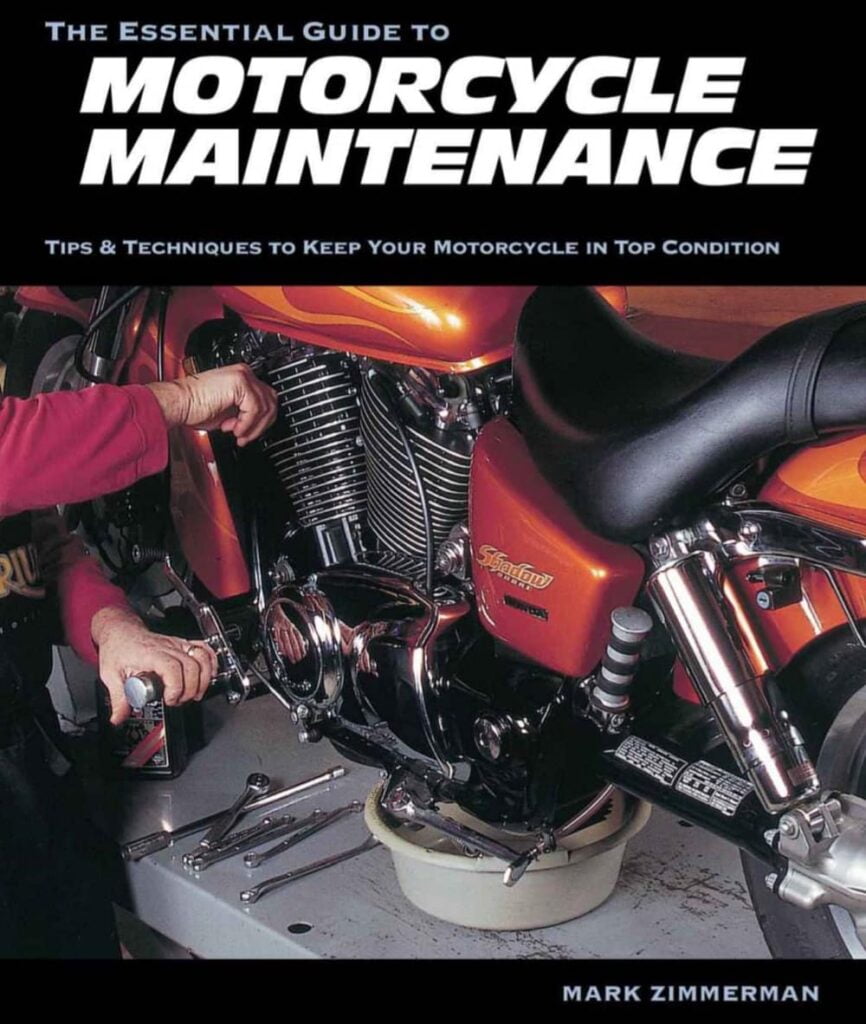
Finally, a book on how your motorcycle actually works.
The Essential Guide to Motorcycle Maintenance was my first reference manual that taught me how to work on motorcycles.
Shop manuals tell you all the complicated things like how to re-torque head bolts. And Haynes manuals have model-specific hints.
This is more a simple guide to doing all the things you need to do to keep your motorcycle working, like tension (or change) your chain, lube your control cables, or change the bulb. The essentials!
These things are essential if you want to go motorcycle touring. Every time you get on the motorcycle you have to do a safety check, during which you might find faulty lights, switch gear, a chain needing maintenance, tyres needing plugging or replacement, or many other things… knowing one step more, how to fix them, makes you better at finding problems — even if you take it to a shop.

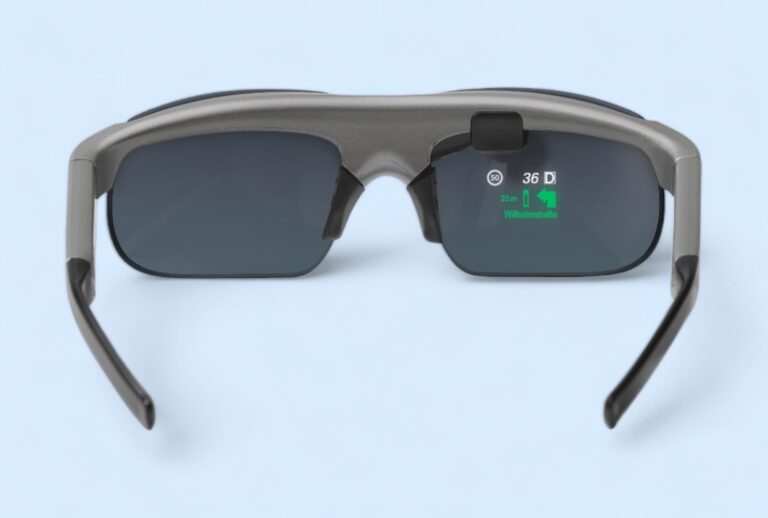
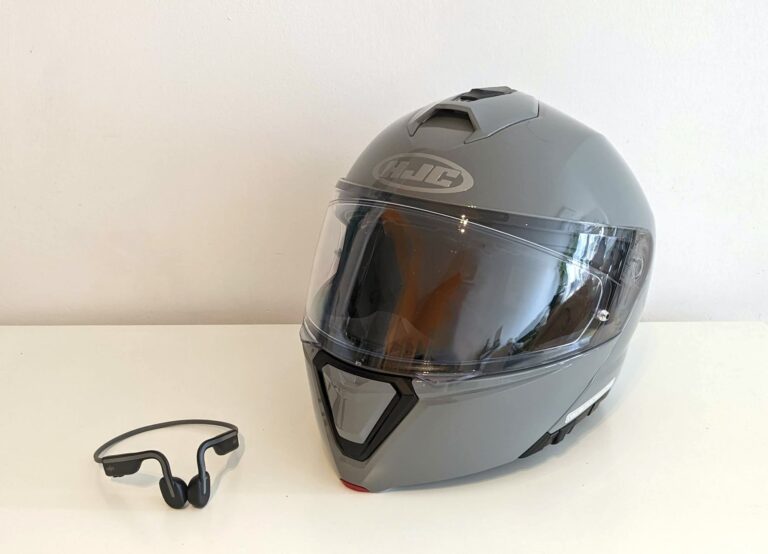
![Gifts for Motorcycle Lovers — A Guide by the Obsessed [2022 Update] 8 Gifts for Motorcycle Lovers — A Guide by the Obsessed [2022 Update]](https://motofomo.com/wp-content/uploads/2021/11/ideas-for-gifts-for-motorcycle-lovers-woman-768x480.jpg)


